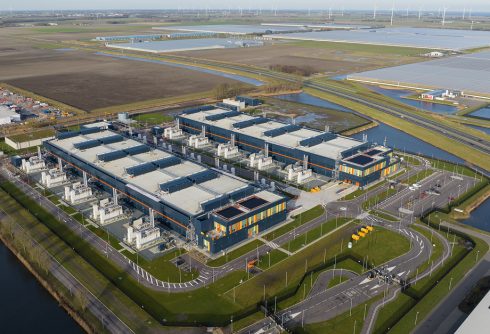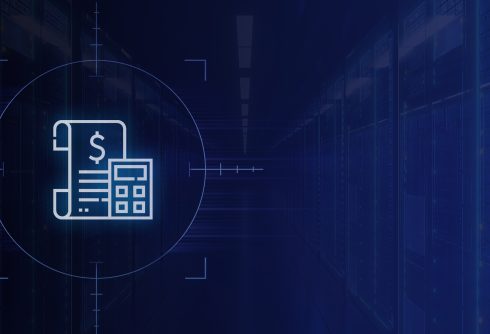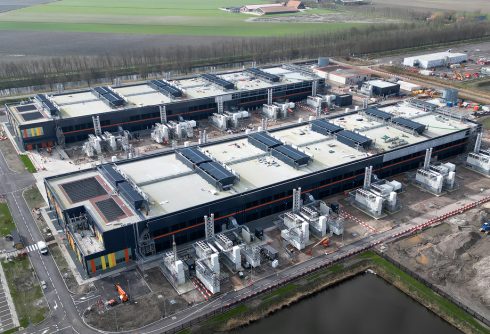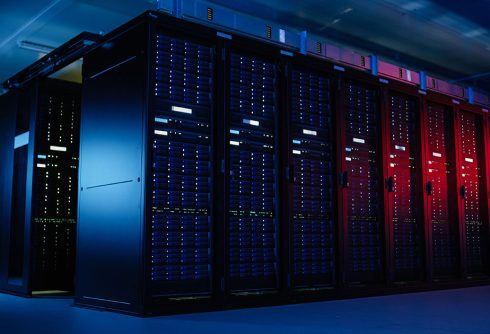In the race to support the digital revolution, a new challenge has emerged in the energy sector. Transformer demand is skyrocketing, driven partly by the rapid expansion of data centers and the rise of energy-intensive technologies like artificial intelligence (AI). As cloud computing and machine learning reshape industries, the energy infrastructure behind these innovations is being pushed to its limits.
The Silent Surge in Transformer Demand
According to BCG, electricity consumption from data centers is expected to rise by nearly 16% by 2030, requiring robust, reliable transformer systems to meet these escalating needs. However, this projection may be conservative as recent U.S. Energy Information Administration data suggests data center electricity load could surge from 17 GW in 2022 to 35 GW by 2030, potentially accounting for 12% of the nation’s total power supply.
The global transformer supply chain, already strained by material shortages, outdated manufacturing practices, and extreme weather events, is struggling to keep up. Lead times, which once stretched only a few months, now span multiple years for many utilities. For data center developers and operators, this poses a critical challenge: without proactive planning and the right supply partners, power constraints could jeopardize growth.
Data Center Growth Is Driving Unprecedented Transformer Demand
Over the past decade, the global demand for data center infrastructure has surged and has shown no signs of slowing down. This growth is largely fueled by the rapid adoption of AI, cloud computing, and big data analytics. As companies integrate these technologies into their operations, the energy consumption of data centers is climbing at a high rate, placing pressure on power grids and the transformers that support them.
Unlike traditional applications, AI models require high-performance computing clusters that draw large amounts of electricity, often running 24/7 to process complex calculations. This continuous demand for power puts considerable strain on grid infrastructure and necessitates a new generation of high-capacity transformers.
Regional impacts are particularly severe. In the PJM region around Virginia, data centers account for over 90% of projected new power demand, while Pacific Northwest data centers are projected to consume 4 GW by 2029, exceeding the capacity of utilities serving 1.2 million customers. These concentrated demands are creating a strain on local grid infrastructure and impacting transformer supply timelines.
In addition to AI, the growth of cloud computing services has further amplified the need for robust transformer networks. With businesses and consumers relying more heavily on cloud storage and remote applications, data centers are expanding their footprints globally. These expansions often require the deployment of specialized transformers capable of handling variable loads, ensuring reliability even during peak usage.
As this demand intensifies, transformer suppliers face mounting challenges to keep pace. Utilities and data center developers must recognize this evolving landscape and adopt proactive strategies to secure the equipment they need to power the digital future. Partnering with suppliers like Northfield Transformers, which leverages a global manufacturing network and streamlined supply chain processes, can provide the flexibility and reliability required to navigate this era of rapid growth.
Why Traditional Transformer Supply Models Are Struggling with Data Center Growth
The surge in data center development has exposed significant weaknesses in traditional transformer supply models. For decades, transformer manufacturing operated within a stable, predictable demand environment, with production processes tailored to utilities’ long-term infrastructure planning. However, the rapid acceleration of digital infrastructure, combined with global supply chain disruptions, has overwhelmed these conventional systems, resulting in unprecedented delays and backlogs.
One of the primary challenges is the reliance on outdated manufacturing techniques. Many transformer production lines still use labor-intensive processes that are difficult to scale quickly. As demand spikes, manufacturers are forced to prioritize large, critical orders, often leaving smaller projects facing extended lead times. In the U.S., for instance, the delivery time for key transformer components has increased from a few months to over three years, a delay that directly hampers data center resiliency.
Overcoming Supply Chain Disruptions
Supply chain disruptions further complicate the situation. Transformers depend on specialized materials like electrical steel, copper, and high-quality insulation. These materials have been subject to severe shortages due to geopolitical tensions, trade restrictions, and pandemic-induced production slowdowns. The scale of the challenge is staggering.
According to Wood Mackenzie’s energy research, lead times for large transformers have increased to up to 3 years, while only 20% of large transformers are manufactured domestically. The Uptime Institute’s latest infrastructure report reveals that over 80,000 unique transformer configurations exist, complicating standardization and procurement efforts across the industry. The scarcity of these critical inputs has constrained production, forcing manufacturers to operate at reduced capacities despite soaring demand.
Moreover, the fragmented nature of the transformer market in regions like North America presents another challenge. With more than 80,000 unique transformer configurations in use, manufacturers must customize transformers for each order rather than produce standardized models at scale. This lack of uniformity makes it difficult to accelerate production, leaving the grid infrastructure vulnerable to delays when demand spikes unexpectedly.
To overcome these challenges, industry stakeholders need to rethink their supply strategies. Working with partners like Northfield Transformers, which utilizes advanced forecasting, diversified supplier networks, and standardized production methods, can help mitigate these risks. As data center energy needs continue to grow, adapting to these supply realities will be essential to ensuring reliable, resilient infrastructure.
How Advanced Manufacturing and Supply Chain Innovation Can Bridge the Transformer Gap
The growing demand for transformers in the data center industry requires more than incremental adjustments. Rather, it demands a fundamental shift in manufacturing and supply chain strategies. As energy consumption rises and delivery timelines stretch, forward-thinking manufacturers are turning to advanced production techniques and supply chain innovations to meet the challenge. The renewable energy boom saw an increase in demand for automated manufacturing. As they rolled out new automated production facilities, the rest of the industry took note, leading to promising trends in technology adoption:
Digitization
One of the most promising developments in transformer manufacturing is the adoption of automation and digital twin technology. Traditional production processes, which often involve manual assembly and inspection, are being replaced by automated systems that increase efficiency, reduce errors, and accelerate turnaround times. Digital twin models allow manufacturers to simulate production runs, predict potential bottlenecks, and optimize performance before physical production begins. This proactive approach shortens lead times and enhances product reliability; all key factors in supporting data center growth.
Embracing Smart Logistics
Advanced logistics management plays a pivotal role in streamlining transformer delivery. Modern logistics platforms utilize real-time tracking and predictive analytics to optimize shipping routes, reduce transit times, and minimize disruptions. These capabilities are particularly important for large-scale data center projects, where delays in equipment delivery can result in significant financial and operational setbacks.
Diversification
Supply chain diversification is another critical strategy in addressing transformer shortages. Historically, many utilities relied on a small pool of suppliers, often concentrated in a single region. However, recent global disruptions have highlighted the risks of this approach. By working with manufacturers across multiple continents, companies can mitigate the impact of regional disruptions and ensure more consistent supply. For example, Northfield Transformers has established partnerships in Europe and Asia, enabling the successful sourcing of critical materials and components even when other suppliers face delays.
Ultimately, the adoption of advanced manufacturing techniques and diversified supply chains isn’t just about meeting today’s demand; it’s about preparing for the energy infrastructure of tomorrow. As the data center industry continues to grow, energy equipment manufacturers that embrace innovation will be best positioned to support this next wave of digital growth. Northfield remains at the forefront of this shift, offering clients access to cutting-edge manufacturing capabilities and global supply networks to meet even the most demanding project requirements.
Proactive Strategies for Data Center Operators to Secure Transformer Supply
As the transformer supply chain faces mounting pressure, data center operators must adopt proactive strategies to secure the equipment needed for reliable, scalable infrastructure. With energy demands expected to grow significantly in the coming years, companies that anticipate these challenges and take preemptive action will gain a competitive advantage. Here are key strategies data center operators can implement to stay ahead:
1. Forecast Future Demand with Data-Driven Insights
Effective planning begins with accurate forecasting. Data center operators should leverage predictive analytics to anticipate power needs based on growth projections for AI, cloud computing, and digital services. By collaborating with energy infrastructure experts, operators can assess potential transformer requirements and place orders well in advance, reducing the risk of costly delays.
2. Diversify Transformer Supply Sources
Relying on a single supplier or geographic region for transformers exposes data centers to potential disruptions. The COVID-19 pandemic and recent geopolitical tensions have demonstrated the vulnerabilities of supply chains concentrated in specific regions. Partnering with suppliers like Northfield Transformers, which maintains a diversified network across Europe, Asia, and North America, ensures more reliable and flexible access to critical equipment.
3. Invest in Energy-Efficient, Future-Proof Equipment
As power requirements continue to rise, data centers should prioritize transformers designed for high efficiency and adaptability. Energy-efficient transformers not only reduce operational costs but also support sustainability goals by minimizing energy loss. Additionally, selecting equipment with smart grid compatibility allows for better monitoring and control of energy consumption as operational demands evolve.
4. Establish Long-Term Supplier Partnerships
Building long-term relationships with trusted suppliers can significantly improve access to essential components. Framework agreements with transformer manufacturers can provide priority production slots and predictable delivery schedules, critical for large-scale data center expansions. Northfield Transformers, for example, works closely with its clients to forecast demand and secure production capacity ahead of time.
5. Plan for Redundancy and Resilience
Data centers must also consider infrastructure resilience when planning transformer procurement. Incorporating backup transformers and implementing redundant systems can help mitigate the impact of unexpected equipment failures. Predictive maintenance technologies, which monitor transformer health and performance, further extend equipment lifespan and reduce the likelihood of unplanned outages.
For data center operators, this challenge requires strategic planning and reliable partnerships. Strengthen your supply chain resilience with our guide: Supplier Relationship Management Strategies to Unlock Success in Energy Procurement.
By integrating these strategies into their operational plans, data center operators can navigate the complexities of today’s transformer supply landscape. Proactive planning, coupled with reliable partners like Northfield Transformers, ensures that energy infrastructure can keep pace with the growing demands of the digital age.
Building a Resilient Energy Future for Data Centers
The rapid expansion of data centers, fueled by the growth of AI, cloud computing, and digital services, has placed unprecedented pressure on the global transformer supply chain. As electricity demand rises and infrastructure requirements become more complex, the industry must adopt innovative approaches to secure reliable, efficient power systems for the years ahead.
Meeting this challenge requires a shift in mindset from reactive procurement to proactive, long-term planning. By leveraging advanced manufacturing technologies, diversifying supply sources, and forecasting future energy needs, data center operators can stay ahead of potential supply constraints. The integration of digital tools like predictive analytics and smart-grid-compatible transformers will further enhance system efficiency, reducing energy losses and optimizing performance.
Partnerships with reliable, forward-thinking suppliers will be key in this new energy landscape. Northfield has positioned itself as a trusted partner by offering high-quality transformers with industry-leading lead times of 4 to 20 months, significantly shorter than many competitors. With a global supply network and a strong commitment to innovation, Northfield supports data center operators in building resilient, future-ready power infrastructure.
As data centers continue to evolve and demand for high-voltage transformers grows, those who act today will be best equipped to power the digital world of tomorrow. For comprehensive strategies on overcoming supply chain challenges, explore our guide on Overcoming the Transformer Supply Crisis.
Learn More
Northfield fosters continuous innovation to transform the energy infrastructure industry by providing unrivaled, end-to-end global procurement, logistics, and production management for energy components.
At Northfield Transformers, we leverage our distinguished capabilities in logistics and production management to rapidly supply mission-critical, high-quality energy infrastructure equipment worldwide. Jump ahead of the competition by reaching out to our team today.









